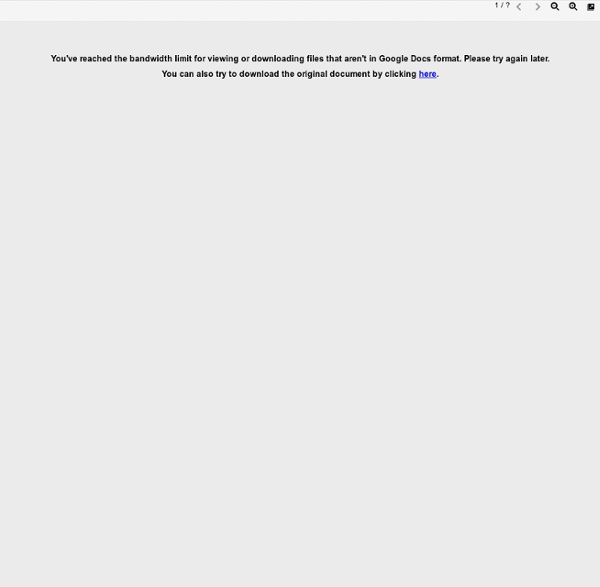



How to Build a Collective Intelligence Platform to Crowdsource Almost Anything Introduction The MIT Center for Collective Intelligence recently published an important overview of the theory and mechanisms behind successful crowdsourcing efforts. Their report, called “Harnessing Crowds: Mapping the Genome of Collective Intelligence“, can be found here. Their research reveals similarities behind many high-profile collective intelligence (CI) systems, including Threadless, Wikipedia and InnoCentive. It then describes how these lesson can be applied to the design of other successful CI platforms. I call this work the MIT Approach to Collective Intelligence, which is a generic approach applicable to a wide range of problems and circumstances. The MIT approach to collective intelligence According to the Center for Collective Intelligence, a good collective intelligence platform (CI) must address the following themes: These four themes then translate into the following four questions: What is to be accomplished? Figure 1, the basic building blocks of a CI system Conclusion
Catalyst - An Intuit Innovation Experience Michael Meade, D.H.L.: The Two Great Stories of the World Recently, I have been on panels where people lament how the troubles of the world seem increasingly intractable. I've heard environmentalists suggest that evolution may have reached a dead end with regard to the human species. I've heard pained audiences decry political parties as well as social movements. I have found myself responding with ancient proverbs such as: "The great person allows universal imagination to work through them." It's as if something quite old and truly resilient is required to face the dire array of modern problems, for most of modern life is arranged to take us away from ourselves. Not just from advertising suggesting that what we lack can be purchased, nor from the ever-growing number of clever distractions, but we also learn to abandon ourselves amidst expectations that the answers to crucial problems and solutions to great dilemmas must come from the world outside us. The answers that sustain life and reveal meaning amidst the confusion come from within.
Presentation Software for Mac and iPad Social entrepreneurs go Hollywood: The promise of change in 25 words or less (It’s pretty hard to change the world, if no one wants to follow your thinking…) Curtis Faith has been asking us all about stories. What is your story? Who is the hero? How will it end? Good questions, because stories provide a powerful framework for spreading ideas. Randy Olson, the scientist-turned-filmmaker, regularly lambastes the academic/science community for getting so caught up in the pointy-headed details that they completely forget how real communication happens. Also take a look at the work by Alex (Sandy) Petland, the author of Honest Signals. Yet most scientists (and other big idea people) don’t get it. The thing is, if you want to move your idea from the edge into the mainstream, from the future to the present, you have to package it. This is not the same thing as dumbing it down. That’s why, especially for the “issue entrepreneurs”, stories are the key to changing the world… And no one is better at telling stories (that move a big audiences) than Hollywood. Hollywood Story:
» Best Procrastination Tip Ever :zen habits Post written by Leo Babauta. Your first thought as you look at this article will be, “I’ll read this later.” But don’t. Let the urge to switch to a new task pass. Read this now. It’ll take you two minutes. I’ve written the book on ending procrastination, but I’ve since come up with a very simple technique for beating everyone’s favorite nemesis. Try it now: Identify the most important thing you have to do today. Clear away distractions. Sit there, and focus on getting started. Pay attention to your mind, as it starts to have urges to switch to another task. But don’t move. Notice also your mind trying to justify not doing the task. Now just take one small action to get started. Get started, and the rest will flow.
What A Detroit Supper Club Teaches Us About Co-Creativity A social movement is underway in downtown Detroit. Each month, 100 or so individuals pay $5 for admission to a loft, where they eat a dinner of organic soup (and other foods) prepared by volunteers. Diners share ideas and connections, hear presentations from artists who are working on projects aimed at improving the city, and then vote on which project will receive proceeds from the evening's dinner. Detroit SOUP organizers call the gathering "a democratic experiment in micro-funding," but it’s much more than that: It’s an example of the power of co-creativity, and it represents the way forward for organizations that want to remain relevant and reach consumers in an authentic way. In recent years, crowdsourcing has become a trendy tactic for soliciting input and engaging consumers, but in reality this approach is nothing more than an open call for submissions. Yesterday, businesses succeeded through industrial or technological expertise, with little need to converse with consumers.